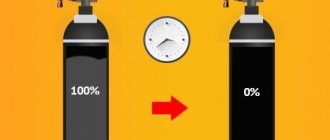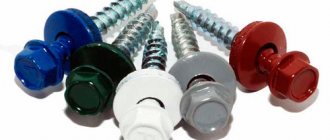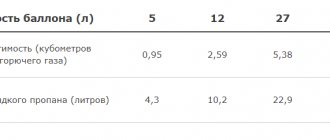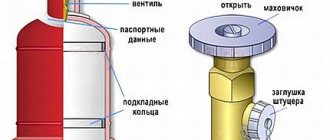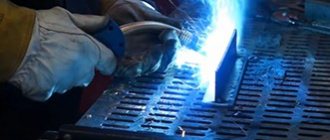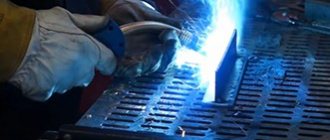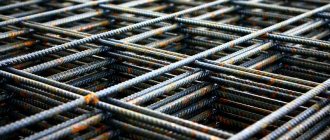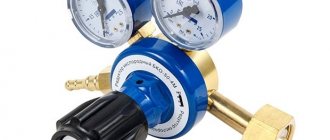Many fans of pneumatic shooting, or “airsoft” players, especially those who regularly use pneumatic/gas airsoft weapons, often wonder about the reusable use of standard 12 gram CO2 cartridges.
In this regard, we offer informational material for those who want to save on this consumable.
For the experiment we will need: an empty can, an M6 thread tap, a soldering iron with acid and solder, a torch and a valve with a nipple from a tubeless car tire (tube)
.
https://gidrokomfort.ru/catalog/khimiya-dlya-bureniya/ presents the best chemical supplier igratnadengi.org
We take a rubber car inner tube, or tubeless tire, and remove the filling valve from it:
Then we separate the nipple from the valve. We clean the valve itself as thoroughly as possible from rubber residues:
Then we cut off part of the tube. Leave the end approximately 1 cm long:
Finally remove the rubber residues:
We saw off the valve on the other side (to the internal thread, about 2 mm):
Apply thread to the other end:
Screw the nipple back in. Now you can see that it is protruding from the valve
Cut off the excess end to the same level as the valve:
Next we work with the spray can.
We cut off its end by about half a centimeter:
We also expand the hole by 5 mm and cut the internal thread:
Then we unscrew the nipple from the valve again, “tin” both threads and screw the valve into the can over the fire:
After this, turn the product with the valve down and hold it over the fire. Then let it cool in the same position.
The result should be something like this:
All that remains is to tighten the nipple:
And, in fact, refill the new reusable device. Good luck!
A little more than half a century has passed since the creation of pneumatics. At first, the developers installed an air injection system on pneumatic weapons, then they invented gas cartridges, which they successfully put into operation and are still used today.
Does the pressure in the can depend on temperature?
Carbon dioxide obeys physical laws; taking them into account, it can be determined that any gas has a critical state, which is characterized by critical pressure and critical temperature.
The critical temperature is the temperature above which gas evaporation cannot turn into a liquid state, under any pressure. Critical pressure is the pressure when the difference between the liquid and vapor states disappears. In this case, both substances are identical in density, their index is zero.
What does it mean? The critical temperature of carbon dioxide is 31.2 ° C, and the pressure is 74 atmospheres, this means that in the can at 31.2 ° C a pressure equal to 74 atmospheres appears, and carbon dioxide acquires a critical state and at this temperature indicator CO2 consumption during shooting increases significantly, since it is not pure gas that comes out through the air valve, but an averaged substance between liquid and gas, which has a density of 0.47 g/dm. cube (carbon dioxide has a density of 1.99 g/cm3).
Moreover, such strong cooling begins that in the barrel channel, directly from this state, carbon dioxide acquires a solid state, the so-called “dry ice”, and the pressure in the barrel channel decreases significantly, this causes a decrease in the initial speed of the ball. Therefore, on hot days, the first shots from an air pistol (until the gas cartridge cools below a critical point) can be quite weak, and the consumption of carbon dioxide occurs much more, and particles of “dry ice” can be observed flying out of the pistol. For normal shooting, the gas cartridge must be cooled to + 21…23°C.
Thus, we can conclude that a gas substance with a critical temperature of + 31 ... 36 ° C and a critical pressure of 210 atmospheres, non-toxic and cheap, is better suited for use in an air gun. But gas with these indicators is still unknown.
How long does a carbon dioxide cylinder last in an aquarium? Co2 consumption in the aquarium. Examples and calculations.
We are often asked how long a gas cylinder will last for me. Let's try to figure this issue out.
When purchasing a cylinder carbon dioxide supply system for an aquarium, the aquarist is faced with the question of which cylinder is best to choose. Obviously, the larger the volume of the cylinder, the less often it will have to be refilled and, accordingly, it will last for a longer period.
Operation of the Co2 System should be as comfortable and convenient as possible, therefore the carbon dioxide cylinder for it should be selected for the largest possible volume. It is best that the interval between tank refills be at least 6 months, and preferably about a year. Unfortunately, this is not always possible to do; this is sometimes due to the dimensions of the installation site of the system and, of course, if the aquarium into which carbon dioxide is supplied is of too large a volume. If you plan to purchase a Co2 System for an aquarium larger than 400 liters, we recommend purchasing an additional reserve cylinder for it. When the gas runs out, the aquarist does not need to drop everything and “fly headlong” to the gas station, he simply replaces the empty cylinder with a full one and calmly goes to his gas station.
Gas consumption in aquariums of the same volume can differ radically from each other, because it depends on the main parameters:
- specific amount of plants, as well as their need for carbon dioxide
- temperature of aquarium water, the higher the temperature, the faster biological processes occur
- light level (with higher light intensity, photosynthetic processes occur much more intensely)
- daylight hours
- water hardness (to saturate aquarium water to the required concentration, much less carbon dioxide must be supplied to soft water)
- Co2 supply method - diffuser, flow-through atomizer reactor, rowan branch or another method (the higher the degree of gas solubility, the lower the consumption)
Determination of carbon dioxide consumption in an aquarium
Carbon dioxide is filled into cylinders not in liters, but in kilograms. We recommend refilling cylinders with a coefficient of 0.6, the maximum value for refilling is no more than 0.72.
Let's look at an example, using a 5 liter cylinder as a basis. 5 l * 0.72 = 3.6 kg of charged carbon dioxide.
1 kg of Co2 in a cylinder under high pressure in the liquid phase upon evaporation forms about 570 liters (570 dm³) of carbon dioxide in the gas phase.
3.6 kg * 570 = 2052 liters of pure Co2.
First way. Weighing the cylinder
This is the simplest way to calculate carbon dioxide consumption. Weigh the cylinder on an accurate scale, then connect your system to the aquarium and put it into operation. After a month, perform a control weighing of the cylinder. Once you know the difference in weight, you can easily determine the carbon dioxide consumption in the aquarium. Knowing the average Co2 consumption of your aquarium, you can also determine at what point you will need to refill the tank. In the future, after refilling, you will be able to easily determine the time of your trip to the gas station and this moment will not come as a surprise to you.
Second way. Complex, impractical and not accurate.
Counting the number of bubbles supplied to the aquarium with further calculation of carbon dioxide consumption.
The carbon dioxide bubble counter can be filled with either water or glycerin. It is worth noting that in glycerin the volume of gas in one bubble is less than in water. This is due to the coefficient of surface tension. Simply put, the bubble in glycerin is approximately 27% smaller than in water. The second point is the viscosity of glycerin. Due to these physical properties of glycerin, the same volume of gas takes about 15% longer to fill a bubble. By measuring the diameter of the bubble, you can determine how much gas is placed in the bubble. But with such a calculation, the final indicators will be extremely inaccurate.
Interesting fact. The bubble counter is very useful for visually monitoring the supply and regulation of carbon dioxide, but not for calculating its consumption. The average gas consumption rate in an aquarium is 1.5-2 g. per 100 liters. For different aquariums, knowing only its volume and average rate, unfortunately it is impossible to accurately calculate the number of carbon dioxide bubbles.
The indicator of carbon dioxide supply in the form of “number of bubbles per second” is an abstract unit of measurement and it depends on the specific aquarium, and it will be possible to determine their quantity only after launch and establishment of the biological balance. Of course, there is an average value for the number of bubbles when carbon dioxide is supplied, but we will talk about this in the next article. We recommend starting the supply of carbon dioxide at a rate of 1 puff/sec, then proceed according to the circumstances. If the concentration of carbon dioxide in the aquarium water is insufficient, the feed rate must be increased, and if the concentration is excessive, reduced accordingly. The concentration of dissolved carbon dioxide can be easily determined using a long-term Co2 test (dropchecker + indicator liquid), what it is and how it works can be read in the article “Dropchecker - information every aquarist needs to know!”
It is best to start the system before the weekend, for example on Friday. This way you will have time and the opportunity to freely observe and, if necessary, make the necessary adjustments to the supply, as well as carry out the necessary tests of the aquarium water.
Average consumption of carbon dioxide in an aquarium
| Cylinder volume aquarium volume | 50 liters | 100 liters | 150 liters | 200 liters | 250 liters | 300 liters |
| Cylinder 2 liters (1400 g.) | 235 | 199 | 168 | 137 | 102 | 67 |
| Cylinder 4 liters (2800 g.) | 470 | 397 | 335 | 273 | 202 | 133 |
| Cylinder 5 liters (3600 g.) | 604 | 510 | 430 | 350 | 260 | 170 |
| Cylinder 10 liters (7200 g.) | 1208 | 1020 | 860 | 700 | 520 | 340 |
| Cylinder 40 liters (14500 g.) | 2416 | 2040 | 1720 | 1400 | 1040 | 680 |
Table of gas consumption depending on the volume of the cylinder and aquarium per day. It provides average calculated data, which may differ radically from the factors listed above in this article, both up and down.
Is it possible to reduce Co2 consumption?
Of course yes, by following the recommendations below, you can easily reduce the amount of carbon dioxide supplied to your aquarium
- Use a solenoid valve in your Co2 system (the presence of an EMC reduces gas consumption by approximately half)
- Use soft water in your aquarium
- If possible, use a flow reactor to supply Co2. Unlike conventional diffusers, a flow reactor ensures almost complete dissolution of gas in aquarium water.
Regularly check your system for gas leaks, especially when checking the sealing gasket between the cylinder and the reducer, which wears out over time and can cause depressurization (gas leaks) in the Co2 System for an aquarium.
Co2 content in aquarium water depending on carbonate hardness °dKH and pH value
The CO2 values (mg/l) in the green field of the table are optimal for healthy and proper plant development.
The optimal water hardness in an aquarium should be from 2 to 6°. With this dKH value, acidity is set at 6.8-7.2, which is the optimal value for an aquarium.
Application of the table.
You measure carbonate hardness, e.g. 6 °dKH, and determine the desired CO2 content as 24 mg/l - this will correspond to a pH value of 6.9 in the table.
At dKH 14° and CO2 22 mg/l the pH value will be 7.3.
For the convenience of aquarists, we suggest downloading the table, printing it on a printer and using it if necessary.
Conclusion
Always remember! The carbon dioxide in the cylinder is under high pressure. Transport cylinders only with the valve closed; a filled cylinder can be transported lying down. Do not fill the cylinder above the established norm (preferably a little less, we recommend using a coefficient of 0.6), do not heat the cylinder. Do not operate the cylinder with the reducer connected and the valve open in a lying position: gas in the liquid phase may enter the reducer, which in turn may cause its failure.
When going to a gas station, be sure to weigh your tank before and after filling up. We really hope that after reading this article you have received all the answers you need to your questions.
If you liked the article, share it with your friends!
© Copying of materials presented on this site is permitted only if there is an active backlink.
Rules for storing gas cartridges
It is important to properly store gas cartridges for pneumatic weapons:
- Do not heat the container.
At a CO2 temperature of more than +55 degrees Celsius, it can provoke a spontaneous explosion of the cylinder. - The room must be ventilated and dry
. The storage area for cans should be ventilated and with low humidity. Avoid exposure to direct sunlight. - Restrict access to cylinders for children.
It is important to ensure the safety of your small family members - store pneumatics and related items in a gun safe, and separately. - Gas canisters must be used for their intended purpose.
Products intended for pneumatics are used in this type of weapon. - Do not store gas-cylinder pneumatics in a charged state.
A punctured can must be shot out to the end. Depending on the manufacturer, loaded weapons can be stored for no more than a day, but preferably no more than 4 hours. Ignoring this rule will lead to damage to the rubber seals.
Prohibited
remove a completely unfired gas cylinder from the pneumatic gun to avoid damage to the gaskets.
Is it possible to reduce consumption?
As noted above, external factors are of great importance during the work process. Therefore, it is desirable to minimize their negative impact. To do this, it is enough to build a closed room, protected from wind and drafts. Do not forget about the safety of the welder by ensuring the room has good ventilation.
Indoors, a filled cylinder will last for a longer period of time.
A special reduction in consumption usually does not lead to the desired result, since in this case the protective functions are reduced and the quality of the welds becomes worse. To reduce consumption, you can use a multicomponent gas mixture, for example, Mixpro 3212, which, in addition, will provide a significant increase in the quality of welding. However, the price of such a mixture will be higher than that of ordinary carbon dioxide. Therefore, the final choice must be made based on technical requirements and budget.
— high-quality gas for welding
If you are really interested in how long carbon dioxide cylinders last, and you do not want to pay for air, then you need to contact only proven and reliable suppliers. A lot of useful information on this issue can be found in the article: carbon dioxide: where to refuel is not an idle question.
not only refills cylinders with technical gases from the best Russian suppliers, but is also their manufacturer. Therefore, there is no doubt about the quality of the filled gas mixture, since all processes are carried out in accordance with established standards, rules and regulations. You will find articles on other technical gases in the corresponding section of the blog.
Which CO2 canisters are better?
| Place | Name | Rating | price, rub. |
| 1 | CO2 canister 12 g AIR-GUN | 8.1/10 | 51 |
| 2 | Can of CO2 Quarta 12 g | 8.5/10 | 33 |
| 3 | CO2 canister 12 g Gletcher Expert Silicone | 9.3/10 | 25 |
| 4 | Increased power CO2 canister (12g+10%) Tula Cartridge Plant | 8.9/10 | 105 |
| 5 | CO2 canister ASG Ultrair | 8.2/10 | 45 |
| 6 | Umarex CO2 can, 12 g | 8.5/10 | 30 |
How to choose
Before choosing an air pistol for self-defense, it is advisable to familiarize yourself with the model you like in action. You can borrow a specific weapon from a friend and go to a shooting range or outdoors, setting goals. During operation, the positive and negative sides of the pistol will immediately become apparent, so a person may change his mind and decide to choose a different brand or a more advanced version of the model. It is important to know how to shoot a pistol correctly and whether you can carry an air pistol with you.
It is advisable to choose a weapon for which you do not need to obtain permission from the Ministry of Internal Affairs. These are specimens of a caliber not exceeding 4.5 mm. If you are not sure about the need to constantly use pneumatics, it is advisable to choose an inexpensive weapon.
You cannot purchase the cheapest products or make a purchase from unverified suppliers offering to purchase a pistol at a reduced price. The quality of the metal and the mechanism in such specimens are imperfect.
For a detailed review of the Beretta air pistol, see here. Check out all the modifications of the Browning pistol here.
Before purchasing, you should evaluate the quality of the material from which the weapon body is made. Some people think that plastic is not suitable in this case, but this is not true. It is quite durable, easy to clean, and does not deteriorate from impacts. To learn how to purchase pneumatic weapons for self-defense, watch the video.
Plastic stores are also reliable and durable. Plastic should not be allowed to be part of the trigger mechanism, as the material will gradually wear out from intensive work.
In most cases, metal cases are quite fragile, since the material used is of poor quality. If you care for it properly, the user will not notice its negative qualities. Such weapons should be handled with care and avoid impacts and falls.
For self-defense, you can choose either a pistol or a rifle (for example, the Hatsan 125 rifle). An air gun is more suitable for hunting, as it is heavy and requires some time to set up. The pistol can be pulled out almost instantly, which is necessary for a person in a critical situation.
To maximize shot accuracy, it is advisable to give preference to single-shot weapons. If it is possible to repeat shots frequently, then the pressure in the gun does not change.
Each bullet is fired at the same speed. In this case, it always hits a predetermined target, which is most important for self-defense.
Many people do not know whether it is possible to use air guns for self-defense? Officially, it is used only to improve shooting skills and for sporting purposes. When choosing, you need to take this into account.
The tactical and technical characteristics of the Makarov pistol are excellent for self-defense.
You can read a detailed description and disassembly of the Colt 1911 pistol here.
Read about the most powerful air pistol for self-defense at:
The gun should not gather dust in your pocket. You need to improve your fighting skills, then this weapon will be much more useful in self-defense. Its prices are low, so you can afford this option for both protection from attacks and training. Prices for small-caliber pistols can be found here. It will be useful for athletes to read about choosing a sports air pistol.
CO2 cartridges for air guns
CO2 gas cartridges are used for many models of air guns. The energy source is liquefied carbon dioxide. As a rule, it is contained in 12 g metal cylinders under pressure. Gas has a two-phase state, that is, there is a gaseous and a liquid substance. Some foreign companies produce CO2 cylinders under their own brands:
- Umarex;
- Borner;
- Crosman;
- Walter.
The canister contains 80% liquid gas and only 20% ready for use. During firing, taking into account the release of carbon dioxide, a small amount of liquid turns into a gas state and fills the free volume that appears. Carbon dioxide is transformed instantly, which makes it possible to maintain a fast rate of fire. At the same time, the pressure in the can does not change, thus ensuring the same initial speed of the bullet. And only at the end, after all the liquid has passed into a gas state, the pressure gradually decreases. This is noticeable in the last shots.
CO2 gas cartridges have one significant drawback - the effect of low temperatures. When the readings are negative, carbon dioxide changes from a liquid to a gas state. This greatly reduces the power of a pneumatic gun shot. That is, such CO2 canisters must be stored and used at positive temperatures.
As for the duration of operation of the can, it will depend directly on the model of pneumatics. Most often, it lasts about 50-100 full shots.
